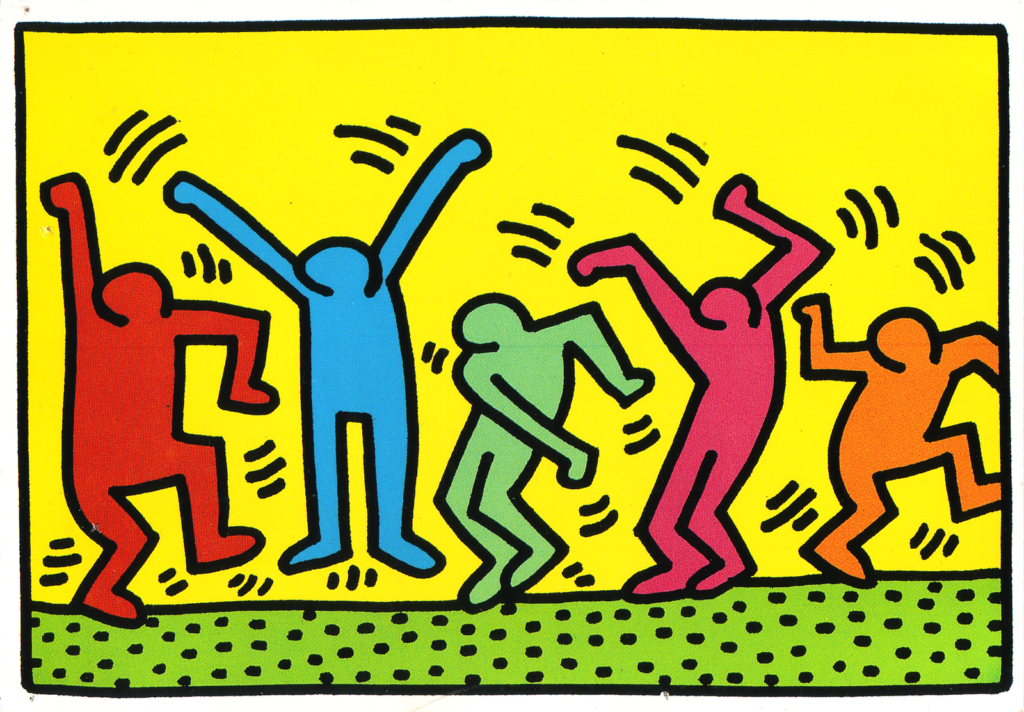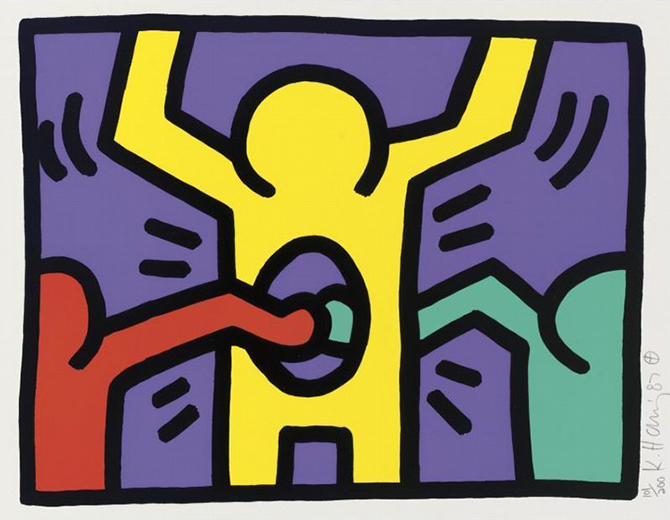Keith Haring
The Vibrant World of Keith Haring
Keith Haring, an iconic figure of 1980s pop art and street culture, transformed the urban landscape with his bold, energetic style. Emerging from the graffiti movement in New York City, Haring’s work is instantly recognizable for its thick lines, vibrant colors, and cartoon-like figures. His art, while playful on the surface, often tackled deep social issues such as AIDS, apartheid, and the crack epidemic, making his pieces a potent mix of accessibility and activism. Haring’s work continues to resonate across the globe, not only as visual art but as a message of hope, love, and equality.


Keith Haring
Art for Everyone: From the Streets to the Galleries

Haring believed that art should be for the people, and his early work in the subways and streets of New York City reflected that ethos. His simple, yet powerful, iconography—radiant babies, barking dogs, and dancing figures—captured the imagination of passersby and quickly became part of the city’s visual identity. Haring’s approach blurred the line between street art and fine art, as his work soon made its way into prestigious galleries and museums. His murals, installations, and public art projects were always created with the intent to connect with a wide audience, using art as a tool for social engagement and change.
A Legacy of Activism and Accessibility
Haring’s art was inseparable from his activism. Whether raising awareness for AIDS or advocating for LGBTQ+ rights, he used his visual language to speak to and for marginalized communities. His work with children and his commitment to public art projects showcased his belief in the power of creativity to uplift and inspire. Even after his untimely death in 1990, Haring’s legacy lives on through the Keith Haring Foundation, which supports AIDS research and children’s programs. His vibrant figures, once seen on city walls, now continue to spread messages of equality, love, and activism in galleries and public spaces worldwide.
Risk warning
YOX does not provide investment advice and individuals should make their own decisions or seek independent advice. The value of collectibles can go up as well as down and you may receive back less than your original investment.
© 2024 YOX. All rights reserved.